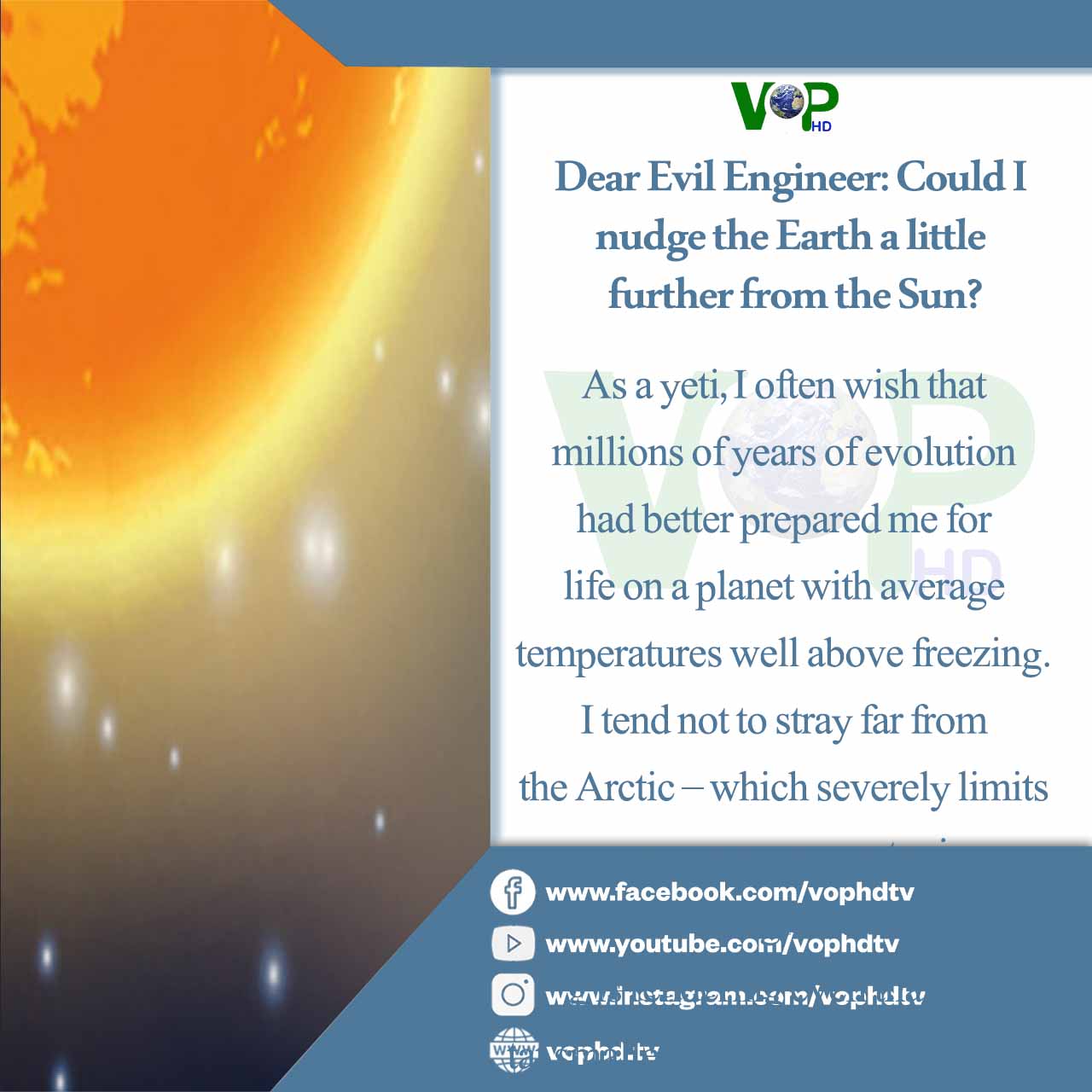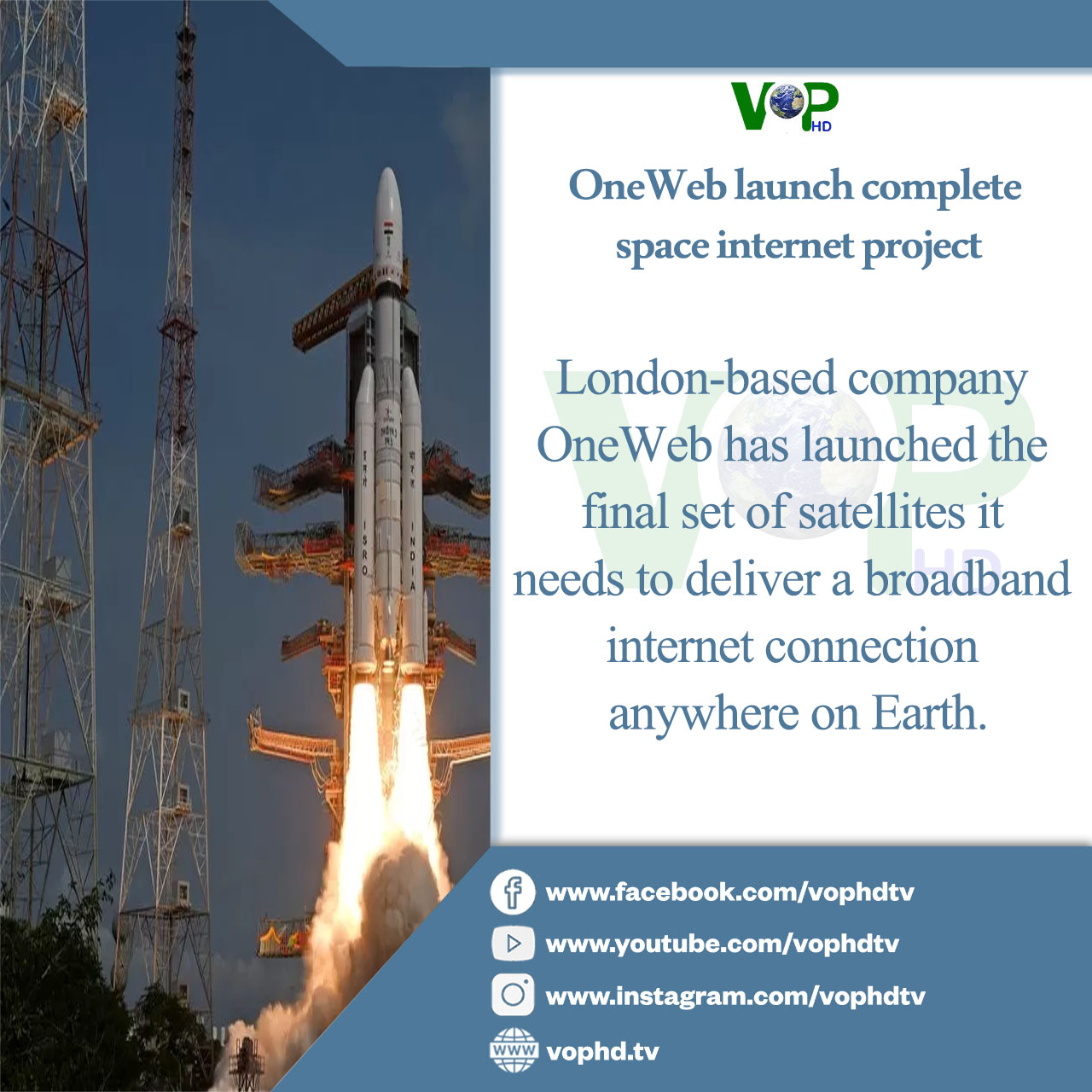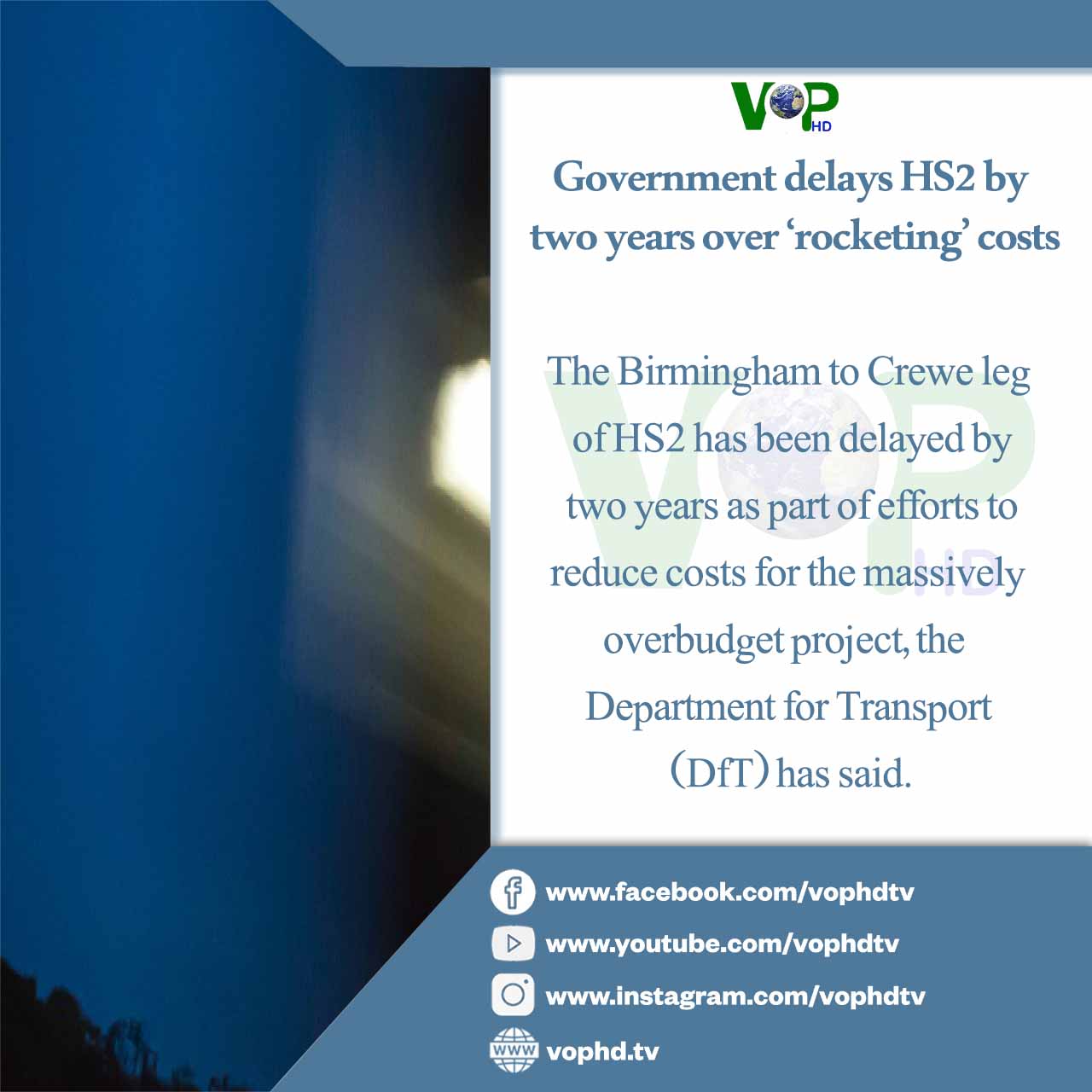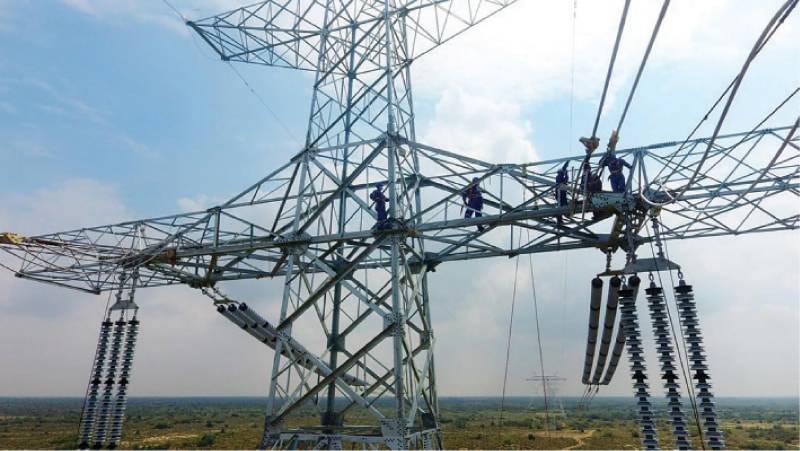
Dear Evil Engineer: Could I nudge the Earth a little further from the Sun?

Can you move Earth to make it cooler for yetis?
Dear Evil Engineer,
As a yeti, I often wish that millions of years of evolution had better prepared me for life on a planet with average temperatures well above freezing. I tend not to stray far from the Arctic – which severely limits my career opportunities – but global heating is rendering even that habitat smaller and sweatier by the year.
Would it be possible to nudge the Earth into a higher orbit around the Sun and bring down surface temperatures to something more comfortable?
Yours,
A yeti
Dear villain,
You will be pleased to hear that the question of moving the Earth into a different, higher orbit has been given more serious thought than questions of this magnitude usually are. Even given humans’ limited lifespans, they have difficulty accepting that the Sun will eventually balloon into a red giant and engulf the Earth (this is expected to occur in seven billion years, though there are just 1.1 billion years until the Sun grows bright enough to raise Earth’s average surface temperature to 50°C).
There are, broadly, three approaches that one could take to move Earth to a different orbit: gravity assistance, ion thruster, or solar sail.
Gravity assistance is a common technique used to adjust the path of spacecraft. For instance, when the Rosetta spacecraft – famed for visiting comet 67P – passed Earth in 2005 and 2007, the Earth’s gravity gave Rosetta slingshot-like boosts. Earth received an equal and opposite impulse with each passing, although the Earth’s considerably larger mass means this had a negligible effect. If a similar manoeuvre was performed with a larger object many times over, this could start to have a noticeable effect.
In a speculative Astrophysics and Space Science paper, researchers from Nasa’s Ames Research Center suggested capturing a comet or asteroid approximately 100km wide from either the asteroid belt or Kuiper Belt and using booster rockets to put it on a path that loops through the solar system, passing close to Earth and to Jupiter or Saturn. As the asteroid or comet sweeps past Earth, it ‘donates’ some of its gravitational energy to Earth, causing it to speed up and shift towards a higher orbit. As it passes near Jupiter or Saturn, the reverse occurs, with the gas giant transferring a little of its orbital velocity. The researchers estimated that an object of this mass would require approximately one billion close passes, spaced a few thousand years apart, to keep up with the Sun’s natural expansion. This could add six billion years to the Earth’s useful lifetime.

Of course, such a scheme is apocalyptically dangerous for a number of reasons, not least because the tiniest miscalculation could cause an object larger than that which killed the dinosaurs to impact with Earth at cosmic velocity. Such an impact, the researchers say, would kill all life on the planet except bacteria.
Let us turn next to the use of thrusters to push Earth deeper into space like a huge round rock-rocket.
Every time a rocket launches from Earth, it imparts a tiny – tiny, tiny – impulse. Shifting Earth into a Martian orbit would require the equivalent of 300 quintillion Falcon Heavy launches at full capacity. This many launches would use up around 85 per cent of the Earth’s mass in materials to build and fuel them.
A more efficient way to push Earth would be to use an ion thruster: an engine which propels a vessel by firing a stream of charged particles, such as xenon ions. These are used to propel many spacecraft, sometimes in combination with gravity assistance, such as on ESA’s Mercury-bound BepiColombo mission. It is estimated that a thruster placed 1,000km above sea level firing an ion beam at 40km/s would be sufficient to move Earth – although it would need to eject a significant fraction of the Earth’s mass to do so. It would also require energies many magnitudes above Earth’s total annual global electricity production, even at theoretical 100 per cent efficiency.
The final possibility is to deploy a giant solar sail in the hope that it makes the Earth drift away from the Sun. Solar sails are mirror-like films which propel spacecraft using the faint radiation pressure of the sunlight falling on them. A 2002 paper calculated that a reflective disc 19.2 times larger than Earth’s diameter, stationed at five times the Moon’s distance from Earth and tilted at an angle of 35° to the line between Earth and Sun, could do the trick. The sail would need to be built in space using materials harvested from metallic asteroids, and would require active control to maintain its shape. The technology to build such a vast object does not yet exist, but, given that this sail would take one billion years for it to move Earth to a Martian orbit, we are working with incomprehensibly long timescales here.
Gravity assistance, ion thrusters, or solar sails: all require unprecedented levels of global co-operation and could put the Earth in significant danger as it shifts orbit. Only one, however, uses technology that is not in the realm of fantasy, and that’s gravity assistance.
If you are determined to move the Earth, I suggest that you start looking for a 100km-wide asteroid.
Yours,
The Evil Engineer
PS: Given the expenses and timescales involved in moving the Earth, it would be worth considering whether it would be more practical to terraform Mars and move there. If you are concerned only with the survival of the yeti race and not the human race, packing them onto rockets to Mars would certainly be preferable to trying to shift an entire planet.



















































































































































